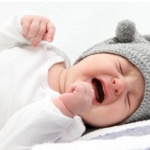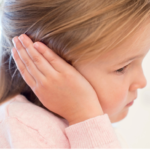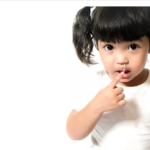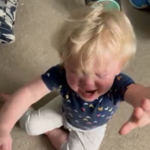Red Rover, Red Rover, What’s that all over?
Rashes demystified.
No More Worries Blog
Hope Chest Pediatrics
Kelly Cotaleen Todd CPNP-AC/PC FPA
Itchy, blotchy, scratchy, rashes!!! So many rashes that make our babies speckled! This blog post will help ease worry and explain some of the most common reasons kids get rashes, what to do, and when to see your provider.
The Basics
As always, let’s start out with some basics and I’ll get into further detail as we go. There are many types of rashes, I will cover four of the most common you’ll see in children: contact dermatitis, viral, fungal, and bacterial. They all have a different appearances, onset, and symptoms involved. We will go into detail throughout the post.
The Down and Dirty
Let’s explore these rash types in greater detail.
Contact Dermatitis
A contact dermatitis is kind of a catchall term for an irritation from something skin has come in contact with that is causing a rash. That something can range from things that are purposely put on the body such as soaps, lotions, perfumes, touching plants, dog dander or saliva are some examples. Things that indirectly come in contact with the skin such as laundry detergent on clothes, new unwashed clothes, or even fabric sprays on carpet or couches. If you have identified the culprit you can work to avoid in the future, sometimes you are not able to identify a clear reason. These rashes are often itchy or feel uncomfortable, sometimes they are unbothersome. They usually start suddenly and after removing the irritant and treating will resolve completely in a few days.
Below are a few visual examples of this type of rash.
Contact Dermatitis Treatment
To start, remove whatever the irritant is by washing with a mild soap and water. If you are unsure of the exact irritant wash area with soap and remove anything that was touching the area. Next, use an over-the-counter topical hydrocortisone ointment, which is clear and greasy. If you cannot find the ointment version the cream is ok too; I just prefer ointments because they absorb the best on skin. Use this twice daily until skin is clear from the rash. If the child is still itchy after using the hydrocortisone, you may try Zyrtec once daily for a few days if the child is over two years of age. Zyrtec can be given to younger children, but it’s best to touch base with your provider beforehand to make sure it is just a case of simple contact dermatitis. You should see a gradual improvement over a few days. However, if the rash is worsening or you see no improvement over 3-5 days, please touch base with your child’s provider to have them look at the rash.
Poison Ivy, Oak, and Sumac skin reactions are also considered a contact dermatitis. This reaction is different because the itching is not caused by a histamine release, as with other types of contact dermatitis, it is from the chemical reaction on the skin from the plant; therefore, antihistamines will not help resolve itching. Topical steroids such as hydrocortisone will though.
If there is a large portion of the body affected or it’s around the eyes, please contact your provider as your child may require a few weeks of an oral steroid taper to help fully resolve the rash. There is an over-the-counter medication I recommend a product called Zanfel* it can provide quicker relief of symptoms when used per package directions. Teaching your child the old saying “leaves of three leave them be” can help deter them from touching the plant in question, but often not totally avoidable in some settings.
*I am not sponsored and have zero affiliation with Zanfel, they’re just a great product and the only one of its kind I would recommend.
Example of Poison Ivy rash
Contact Dermatitis Take-Aways
- Caused from a direct exposure to an irritant sometimes unknown
- Wash area with soap and water
- Apply topical steroid such as Hydrocortisone
- Ointment is preferred over cream
- Unless rash is from Poison Ivy, Oak, or Sumac may try Zyrtec over age 2 years for itching
- Contact provider if child is under 2 years for guidance
- Continue to use Zyrtec daily and Topical Hydrocortisone twice daily until rash is clear
- If rash has no improvement or worsening after 2-3 days of oral Zyrtec and topical Hydrocortisone, please follow up with your provider
- Contact your provider if you suspect a large poison Ivy, Oak, or Sumac rash or you think it is around their eyes
Viral Rashes
Viral rashes are caused from a viral illness such as roseola, or fifths disease, there are many other causes of viral rashes and often providers just refer to them as a viral exanthem, meaning viral rash. These are very common rashes in children especially for young children and children who are around other children like daycare or school. There really isn’t anything to do to prevent other than normal hand washing and keep them home when they are first sick or have a temperature 100.4F or higher.
Viral rashes have many presentations in children. Many appear after a couple days of fever, sometimes cough/congestion also precedes the rash. They are often flat, not raised, mildly red, and they typically do not itch. Often, they start out on the abdomen/trunk area and spread out to the limbs. See below.
There is no action to take for these types of viral rashes. Typically, they do not bother the babes, so just manage the other symptoms they may have such as fever, cough/congestion.
Hand, Foot and Mouth disease (HFM) is also in the viral category and ranges in severity. This rash is different than most viral rashes as it appears on the palms of hands and soles of the feet (most other rashes spare those areas). This viral illness is also in the mouth, throat, can be all over the body including in the diaper area. There is quite a range of severity of HFM. Some children get high fevers in the first couple of days then the rash starts and spreads, others do not get a fever at all. The rash can range from a few spots to the entire body except the scalp. The rash does gets peel as it’s healing and some children’s nails fall off while the rash is drying up, just so you are not alarmed.
The most important intervention with this type of viral illness is maintaining hydration. The pain from the rash in the mouth can deter the child from wanting to eat or drink. Be sure to offer a lot of cool fluids/popsicles that will not burn their mouths. Treating the pain with Tylenol or Motrin can be helpful too.
Maintain normal skin care and monitor rash for infection since the bumps/lesions are open.
These types or rashes are contagious until the child is fever free for 24 hours with no medications and the rash is not spreading anymore. With the HFM rash it’s important to keep home until no new spots have started for at least 24 hours.
Viral rash Treatment
As with any illness make sure your child is comfortable enough to drink age-appropriate fluids enough to pee at bare minimum 3 times daily. If they are uncomfortable from fever or the rash, or mouth sores from HFM, treat with Tylenol or Motrin (only safe if 6 months of age or older). Even with HFM maintain normal skin care routines and use an emollient to skin such as Aquaphor. The rashes go away in time, some faster than others.
Viral rash take-aways
- Caused from a viral illness, no medications will make it go away faster
- Supportive care for other symptoms such as treating pain/fever with Tylenol/Motrin
- Maintain hydration through age-appropriate fluids
- Sometimes has fever, cough/congestion a few days prior to onset of rash
- Keep away from other children until fever free for 24 hours without medications and rash has not spread in at least 24 hours.
Fungal rash
The most common cause of a fungal rash is yeast. This grows best in warm, damp areas such as diaper areas and under chins/neck area. Small raised red bumps appear and spread out in a pattern referred to as a satellite. They can be itchy and uncomfortable; hydrocortisone or other steroid creams can make them worse. Keeping areas that are most prone to these such as diaper areas or under baby’s chin/neck area clean and dry can help prevent this, but sometimes that is an impossible feat with illness or excessive drooling. Keeping a barrier ointment on those areas such as Aquaphor can help keep the skin protected from drool, stool, and urine.
Fungal Rash Treatment
These rashes need to be treated with an antifungal, which you find in the athlete’s foot aisle of any store or pharmacy, called Clotrimazole (brand name Lotrimin). Be sure that Clotrimazole is the only active ingredient and it’s in the cream form, not powder or spray. Use it every other diaper change, or about four times daily until the rash is gone plus two more days. I suggest a good barrier cream such as a high zinc diaper cream or minimally Vaseline or Aquaphor type ointments between antifungal use. Keep in mind, the rash can take a few weeks to fully resolve, as yeast rashes are slow to heal.
Get seen by your provider if the rash is worsening or persistent after using Clotrimazole for two weeks or any new symptoms appear. Sometimes you need a prescription antifungal if the over-the-counter stuff is not cutting it. Make sure to give it a full two weeks before assessing the effectiveness.
Fungal Rash Take aways
- Warm, damp creases
- Small raised red bumps that satellite out
- Over the counter Clotrimazole until clear plus 2 days 4 times daily
- Follow up if worsening or no change after 2 weeks of Clotrimazole use
Bacterial Rash
Bacterial rashes are diverse and range in presentation, just like viral rashes. The types I encounter often in my practice are called folliculitis and impetigo. Folliculitis is a bacterial infection of the hair follicles and can happen on any area of the body. It causes small fluid filled bumps with surrounding redness. The fluid in the bumps is yellow to white in color and may cause pain or discomfort.
Impetigo is typically around the nose and mouth but can be anywhere on the body. This rash has a honey-colored crust to the fluid filled bumps with surrounding redness.
Encouraging good hygiene and frequent hand washing with soap and water can help cut down on the incidence of bacterial rashes. Kids touch everything and put everything in their mouths as a way to explore new things so don’t be too hard on yourself if you notice one of these rashes, it happens to the best of us!
Bacterial Rash Treatments
Both types of rashes need, at minimum, a prescription antibiotic ointment called Bactroban (Mupirocin) and sometimes if there is a large enough area affected, they will need an oral antibiotic as well. Typically, the antibiotic prescribed is Keflex (Cefalexin), unless your child has a known allergic reaction.
Both rashes require an appointment with your provider to get the diagnosis and prescriptions. Be sure to wash the area with soap and water daily and use an emollient such as Vaseline or Aquaphor to act as a barrier to protect the skin. Follow-up is needed if there is no improvement or worsening rash after 72 hours on the prescription antibiotics.
Bacterial take-away
- Need to be seen by provider for diagnosis and prescription for medications
- Wash daily with soap and water
- Use emollient ointment such as Vaseline or Aquaphor throughout the day to protect area
- Follow up with provider after 72 hours on prescription medications if no improvement or worsening rash.
The End has Come
As you can see there are many varieties of rashes. I just went over a few of the major categories, but there are plenty more. If you suspect your child has one of these varieties of rashes and the treatment is not working, please have them seen by their provider. Some things look like one thing but are really another. Sending pictures to your provider via electronic medical record is always a great first step to verify your suspicion is correct. As always, I encourage you to see your provider for a definitive diagnosis if something is not improving or worsening. Even though these statements are backed by medical expertise they are not meant to be a replacement for your child being seen by their provider or communicating with their provider directly.




